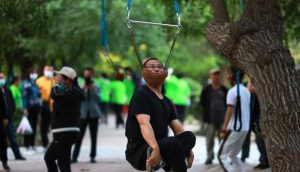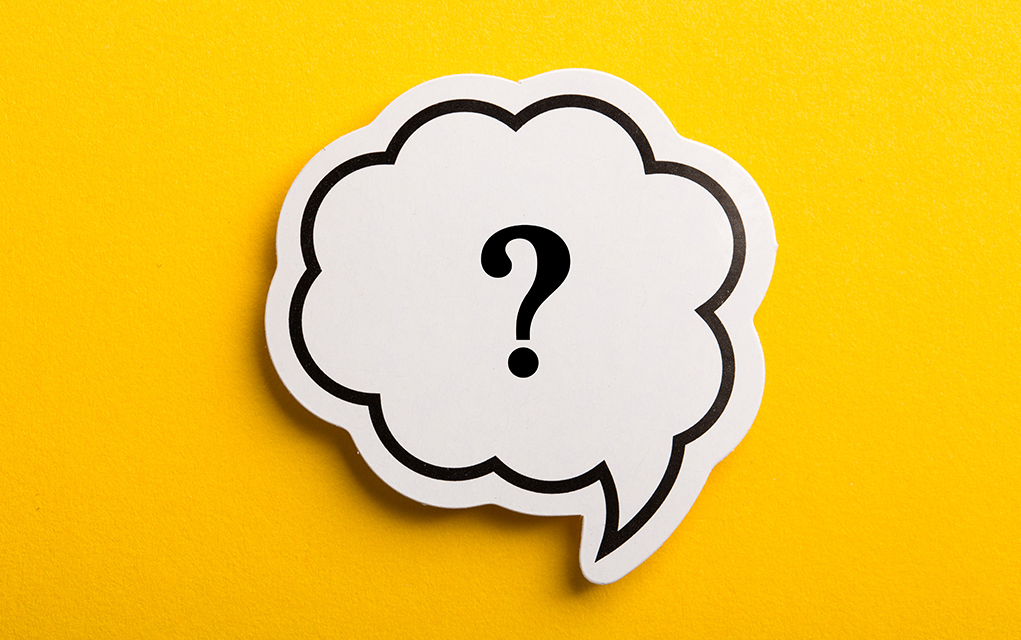
Are you a language enthusiast, a learner of Chinese, or simply intrigued by the beauty and complexity of Chinese language? If so, get ready for an exhilarating journey into the fascinating world of Chinese characters and their rich cultural significance. In this blog, we will unlock some of the mysteries and debunk common misconceptions surrounding the Chinese language through a series of interesting and random questions.
As we embark on this linguistic adventure, we’ll delve into topics that range from character amnesia and mnemonics to stroke order and the selection of Chinese and English names. So, fasten your seatbelts – let’s begin!
How many Chinese characters and words are there?
There are over 50,000 Chinese characters in existence which are used to make up over 500,000 words. Hanyu Da Cidian, which is lexicographically comparable with the Oxford English Dictionary, includes over 23,000 characters and 370,000 words. The dictionary features over 18,500 pages and weighs almost 30kg, so spare a thought for any postman or postwoman that must deliver a copy!
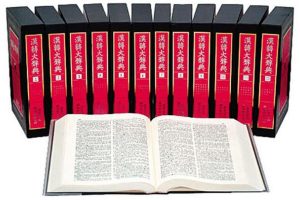
How many characters does a native Chinese speaker know?
An educated native Chinese speaker will know around 8,000 characters. If you are learning Chinese as a second language, you would be able to read a newspaper with an understanding of 2-3,000 Chinese characters.
Do native Chinese speakers remember how to write all characters?
Most native speakers can still identify the 3,500 most common characters used in daily life. However, with the romanisation of Chinese characters (Pinyin) and modern technology, people can now input characters into a computer or mobile phone without knowing how to write them by hand. This reliance on technology has led to a phenomenon known as character amnesia, which is prevalent in Chinese language as well as other East Asian languages. As the old saying goes, if you don’t use it, you lose it!
What is Character Amnesia?
Character amnesia refers to the phenomenon where native Chinese speakers, despite being fluent in spoken Mandarin or other Chinese languages and dialects, may struggle to remember how to write certain Chinese characters. This issue has become more prevalent in recent years due to the widespread use of electronic devices and keyboards, which have made handwriting characters less common in daily life.
This phenomenon has sparked concerns among educators and language experts about the potential loss of this important aspect of Chinese culture. Efforts are being made to address character amnesia by promoting the importance of handwriting, calligraphy, and character recognition in Chinese language education.
Interesting fact: The Chinese word for character amnesia is 提笔忘字 (tí bǐ wàng zì), which literally means “pick up the brush, forget the characters”.
How do Chinese speakers read characters they don’t know?
Chinese speakers can often break down characters into radicals to figure out the likely meaning and pronunciation. Technology is also helpful, as people can now scan the word or characters using an Optical Character Recogniser (OCR). Before technology, people would have to break down characters by radicals and number of strokes to be able to find the definition and pronunciation in a hard copy dictionary. Failing that, asking a friend or family member could always be helpful!
How does the use of radicals in Chinese characters help with understanding their meanings?
There are around 200 radicals in Chinese language and they are the base components of characters. You can think of them as the building blocks of Chinese characters! Learning them can help you to distinguish the character’s meaning and pronunciation.
Example: The radical 氵, (sāndiǎnshuǐ) or “Three Drops of Water”. It is found in the following characters: 海 (ocean) , 游 (swim) , 河 (river).
How do Chinese speakers type Chinese characters?
The most common method of typing Chinese characters is Pinyin input (phonetic typing), which can be typed on a traditional QWERTY keyboard. There are also various other Chinese input methods for computers, such as non-phonetic typing, character handwriting and speech recognition.
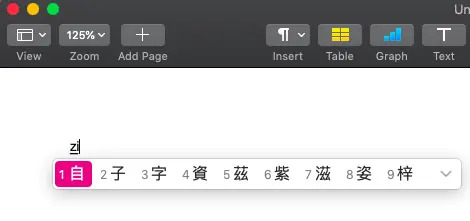
Can you use Chinese characters for passwords on Chinese websites and apps?
As standard, the input method for Chinese characters is disabled when password fields are opened. From a technical standpoint, there is no reason why Chinese characters couldn’t be used for passwords, however it is not common.
Can you enter Chinese characters in URLs?
Chinese characters are not used in URLs. If Chinese characters are inputted into URLs, the characters are converted to Punycode which complies with Domain Name System (DNS) standards. Punycode changes all non-Latin characters in domain URLs to a series of letters, digits, and hyphens.
Do you read Chinese left to right or right to left? Chinese reading direction.
Traditionally, Chinese was written vertically (top-to-bottom) and read right-to-left. However, in modern times, almost everybody writes (and reads) Chinese horizontally left-to-right.
How do native Chinese speakers learn character tones?
The tone of a word is learned when a Chinese speaker learns a word. Each word is learned as a package. Although tricky for second language learners, to native Chinese speakers, tones are “no big deal”. They can cause a problem in songs, however, as musical tones override the Chinese linguistic tones. Lyric sheet, anyone?
How do Chinese speakers use the four tones in written communication?
Radicals can sometimes be used to distinguish the sound of Chinese characters, but this is not a fool-proof method. To be sure of the pronunciation and tone of a word, a Chinese speaker will look the word up in a dictionary.
Can you use mnemonics to study Chinese?
Mnemonics are most useful when learning how to write Chinese characters. Mnemonics are learning techniques that aid in the retention of information. There are many sample mnemonics available on the web to learn Chinese, however you can most fruitfully use mnemonics created by yourself as they will have personal associations that help them stick. You can always use others’ mnemonics for inspiration before making your own!
Example of visual imagery to study Chinese characters
The character for “big / large” is 大 (dà). You can picture this as a person with both arms held out exclaiming “it’s this big!”.
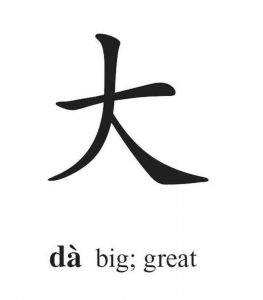
Is stroke order important when learning to write Chinese characters?
It is important to focus on stroke order from the get-go when learning Chinese. As the level of fluency improves, characters become more complex and you will need to be able to write more characters in a shorter amount of time. Building a strong foundation of the correct stroke order makes your writing more legible and you will be able to write at a much faster pace.
What are the different types of Chinese characters?
The Chinese writing system consists of six types of characters, each with its own distinct characteristics and historical origins. These types are:
- Pictograms: Pictograms are characters that resemble the objects or concepts they represent. They originated from drawings of tangible items and were among the earliest forms of Chinese characters. For example, the character “日” (rì) meaning “sun” resembles the shape of the sun.
- Ideograms: Ideograms, also known as ideographs, are characters that represent abstract ideas or concepts. Unlike pictograms, they do not directly resemble the objects they represent. Instead, they use visual elements to symbolize intangible notions. For instance, the character “上” (shàng) meaning “up” or “above” depicts the concept of something being higher or superior.
- Compound ideographs: Compound ideographs combine two or more ideographic elements to create new characters with more complex meanings. These characters are formed by combining different components to convey a more specific idea or concept. An example is the character “休” (xiū) meaning “rest,” which combines the ideographic elements for “person” and “tree.”
- Rebus characters: Rebus characters are formed by using an existing character with a similar pronunciation to represent a different word. They rely on the phonetic similarity between characters rather than their meanings. This type of character was commonly used in ancient times to express words or concepts that did not have their own distinct characters.
- Phono-semantic compounds: Phono-semantic compounds combine a phonetic component with a semantic component to create characters. The phonetic component provides a clue to the pronunciation, while the semantic component indicates the meaning. This type of character accounts for most Chinese characters in use today. For example, the character “听” (tīng) meaning “to listen” consists of a phonetic component “口” (kǒu) meaning “mouth” and a semantic component “耳” (ěr) meaning “ear”.
- Transformed cognates: Transformed cognates are characters that have undergone significant changes in form and meaning over time but still retain a connection to their original roots. They may have evolved through simplification, phonetic changes, or shifts in semantic associations. These characters can be challenging to recognise and understand without knowledge of their historical development.
Understanding the different types of Chinese characters provides valuable insights into the evolution of the writing system and the intricate relationships between form, sound, and meaning within the Chinese language.
Why are Chinese characters considered pictographic?
Chinese is often referred to as a pictographic language in which the characters picture what they represent. However very few Chinese characters are pictographic.
How many Chinese characters are pictographic?
Around 600 Chinese characters are pictographic, which represents around 4% of the words most used in Chinese language. Pictographic characters are generally the oldest in Chinese language and their origins trace back to oracle bone scripts!
Top tip: Why not read our brief history of Chinese characters?
Are there any dialects or regional variations in the written Chinese language?
There are over 300 languages and dialects that people use to communicate in China, although some have very few speakers. However, there are only two types of written Chinese: simplified and traditional. The ten most common Chinese languages and dialects are:
- Mandarin
- Cantonese (Yue)
- Wu
- Min
- Hakka
- Gan
- Xiang
- Jin
- Huizhou
- Pinghua
How do Chinese speakers differentiate between simplified and traditional characters?
The easiest way to distinguish between simplified and traditional Chinese characters is the way they look. Traditional characters are usually more complex and feature more strokes, whereas simplified characters are simpler and with fewer strokes. As its name suggests, simplified Chinese is quicker and easier to write when compared to traditional Chinese.
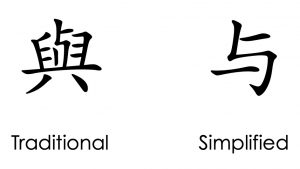
How has the Chinese language evolved through the years?
Written classical Chinese dates back over 6,000 years. Simplified characters have been around for hundreds of years in China, but they were adopted formally during the 1950s. Another key factor in the evolution of Chinese language was the development of Pinyin in the 1950s, which is the romanisation of Chinese characters. As with all languages, modern Chinese has moved with the times and continues to be developed. Take, for example, loan words that are “borrowed” from another language. Words such as 披萨 (pīsà) for “pizza” and 酷 (kù) for “cool”.
Is it hard to learn Chinese grammar?
Chinese grammar is extremely simple when compared to many other languages. There is only one word form, so there’s no conjugation of words. For the past tense, you just add the particle 了(le). There is also no gender classification of nouns, which is common in languages such as Spanish and French.
What is the standard Chinese sentence order?
The most basic sentence order in Chinese is SVO – Sbj + Vrb + Obj (subject, verb, object).
For more complex sentences, the standard order is Sbj + Tme + Mnr + Plc + Neg + Aux + Vrb + Cmp + Obj (subject, adverbials [time, manner, place], negative, auxiliary verb, verb, complement, object).
How do Chinese speakers handle homophones in writing?
There are around 400 phonetic syllables in Chinese language, which means it’s common to encounter words that sound similar but have different meanings. There are also characters and words that have varying meanings in different contexts.
Do Chinese characters have different meanings in different contexts?
Yes. Context is key to understanding homophones in Chinese, as you can pick up the correct meaning of a word in a sentence due to the context. Homophones are extremely important in Chinese culture, such as auspicious homophones for Chinese New Year and other celebrations, as well as their use in comedy and popular culture.
How do Chinese speakers express emotion through speech?
Tones in Chinese refer to the pitch of speech and do not indicate intonation or emotion. Therefore, in Chinese it is still easy to convey emotion through speech. Often, people will elongate tones or overemphasise certain words to convey sarcasm or frustration.
What are some interesting examples of Chinese idioms or proverbs related to the language itself?
一字之师 (yī zì zhī shī)
Translation: A teacher of a single character.
Meaning: This idiom refers to someone who possesses profound knowledge or expertise in a specific field, to the extent that they can be considered a master even based on a single character.
读万卷书,不如行万里路 (dú wàn juǎn shū, bù rú xíng wàn lǐ lù)
Translation: Reading ten thousand books is not as beneficial as traveling ten thousand miles.
Meaning: This proverb emphasizes the importance of practical experience and real-life encounters over theoretical knowledge alone.
画蛇添足 (huà shé tiān zú)
Translation: To draw legs on a snake.
Meaning: This phrase refers to the unnecessary or redundant addition of something to a situation that is already perfect or complete, like drawing extra legs on a snake.
What are some common misconceptions about the Chinese language and characters?
Top 5 misconceptions about the Chinese language:
- All Chinese characters are pictographic. While some Chinese characters are pictographic (around 600 characters, or 4% of those in common use), most Chinese characters are not.
- Chinese characters have a one-to-one correspondence with English words. Unlike English, which typically uses one word to represent one concept, Chinese characters often encompass multiple meanings. Depending on the context, a single character can convey various meanings. Therefore, it can often be challenging to provide a direct translation of a character into English.
- Learning Chinese is excessively difficult. While learning to write Chinese is extremely challenging, there are other aspects that make learning Chinese less challenging overall, such as simple grammar and sentence structure.
- Chinese characters are the same across all Chinese-speaking regions. There are variations in the Chinese writing system, primarily between simplified and traditional characters. It’s important to recognise and understand these variations depending on the region and context.
- Chinese is a monolithic language. Chinese is often referred to as a single language, but it is more accurately described as a language family with several distinct dialects, such as Mandarin, Cantonese (Yue), and Wu. These dialects can differ significantly in pronunciation, vocabulary, and grammar. Mandarin, as the official language of China, is the most widely spoken and standardised form.
How are Chinese children introduced to characters?
When children learn English, after learning the 26 letters of the alphabet they can theoretically spell out words. When Chinese children are first introduced to characters, they will start with simple words such as 一 (one), 二 (two), 三 (three). Children are then introduced to pictographic words such as 山 (mountain) through picture books, as these characters look like the words they represent. As children begin formal education, rote-learning is still the most common way to learn Chinese characters.
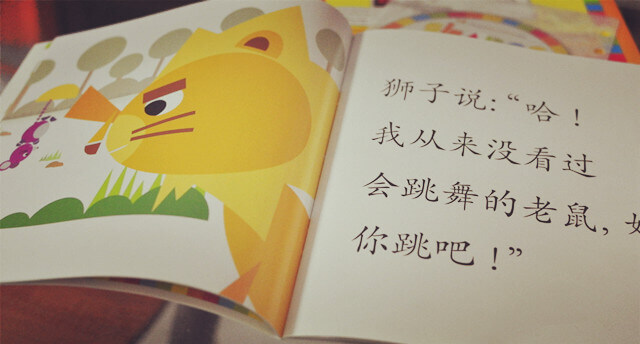
Can the younger generation of Chinese native speakers read traditional characters?
Generally, school students only study one written form of Chinese: simplified or traditional. However, with a little practice, people who learn either written form can read the other. This is easier for people schooled in traditional Chinese rather than simplified Chinese, but neither would find it too challenging.
How do Chinese parents choose Chinese names?
After the family name (which appears first in Chinese names), Chinese parents generally choose one or two characters for the child’s given name. Traditional naming principles feature auspicious characters, desirable virtues or cultural symbolism. Other factors such as family tradition, sound and pronunciation, and five-element theory can also influence given names in Chinese language.
Do Chinese names imply gender?
Yes, traditional Chinese names often imply gender through the choice of characters. Chinese characters can be classified as either male or female in terms of their meanings, and parents typically select characters that align with the gender of their child.
For example, characters containing the radical “女” (nǚ), which means “woman” or “female”, are often used in female names. On the other hand, characters with the radical “男” (nán), meaning “man” or “male,” are commonly used in male names. These gender-specific radicals can provide a clue about the gender associated with a Chinese name.
Additionally, the use of certain characters or combinations of characters can also convey gender. For instance, names with the character “美” (měi), meaning “beauty” or “beautiful”, are often used for female names, while names with the character “勇” (yǒng), meaning “brave” or “courageous”, are more commonly associated with male names.
However, it’s worth noting that in modern times, there has been a growing trend of choosing gender-neutral or unisex names in Chinese-speaking communities. These names intentionally avoid gender-specific connotations.
How do native Chinese speakers choose an English name?
Some people choose an English name that closely resembles their Chinese name. Some native Chinese speakers seek English names with meanings that reflect positive qualities or personal attributes they admire. Another popular choice are names with personal connection, or names taken from an admired celebrity!
Why is the most spoken Chinese language called Mandarin?
The word Mandarin comes from the Portuguese term “Menteri”, which means “official” or “minister”. This term developed in Chinese language from 官话 (guānhuà), or “language of the officials”. Nowadays, Mandarin is named as 普通话 (pǔtōng huà), which means “common language”.
Which Chinese dialect group is most similar to Mandarin Chinese?
Gan is the language that is most similar to Mandarin Chinese. Gan is spoken by approximately 48 million people and is primarily spoken in Jiangxi province and the south-eastern corner of Hubei province in China.
Conclusion
Exploring the fascinating world of the Chinese language and characters reveals a diverse range of topics and intricacies. From the vast number of characters and words to the challenges of character amnesia and the use of mnemonics, there is much to learn and discover!
Author:
Sean McGibney speaking to students at Beths Grammar School about his experience of learning Chinese, living in China and founding The Chairman’s Bao and Newsdle.
Sean studied Chinese and Spanish at University of Leeds and founded The Chairman’s Bao alongside Tom Reid in his final year of study in 2015. Current Managing Director of The Chairman’s Bao, he has overseen the company’s growth from university bedroom concept to an international force in the EdTech industry with over 200,000 individual users and over 400 global partner institutions. Sean also launched Newsdle alongside Tom Reid and Oliver Leach in 2021, for students and teachers of Spanish and French. In his spare time, Sean is still a keen language learner and runner. He also sits on the Board of charity Leeds Irish Health and Homes in the UK.
Sources:
- BBC
- Cambridge University Press & Assessment
- East Asia Student
- Stack Exchange
- Wikipedia
- Quora








